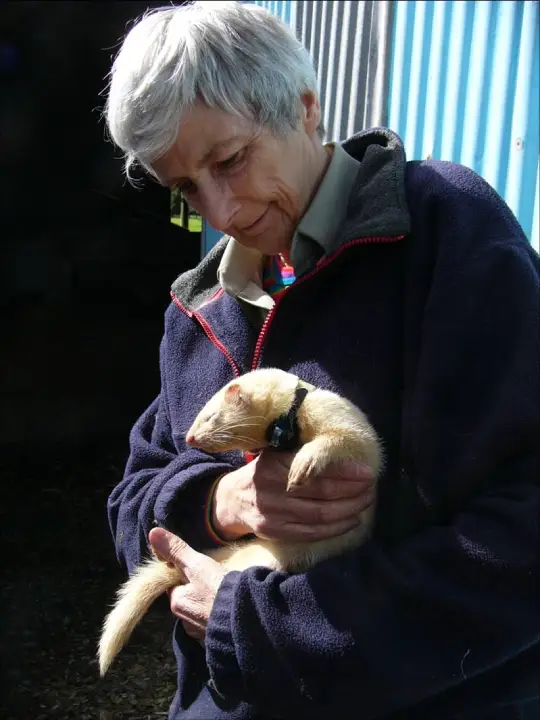We should never say never when it comes to the possibility of New Zealand being predator free according to one pest expert.
However, she says it’s unlikely to be any time soon.
University of Waikato Emeritus Professor Carolyn (Kim) King has been studying stoats and their effect on New Zealand’s native species and biodiversity for the last 54 years.
Stoats are carnivorous mammals from the same family as weasels and ferrets.

University of Waikato Emeritus Professor Carolyn (Kim) King, who has studied stoats for over half a century.
They were introduced to New Zealand in the 1880s in the hope of bringing the country’s rabbit population under control but have proven to be invasive predators, especially destructive to species such as Kiwi chicks.
Professor King, who immigrated to New Zealand from the UK in 1971, holds a PhD on weasels. It was thought her expertise could help with New Zealand’s stoat problem.
Stoats can do a huge amount of damage to certain birds, Professor King says, particularly Kiwi chicks.
They have few natural enemies other than rare encounters with ferrets or cats, so the only effective limit on their numbers is food shortage.
“Populations of animals are controlled either from the bottom up by food supply, or from the top down by natural enemies. And stoats belong to the first category,” she says.
With a lack of technology and resources to enable effective control of invasive predators like the stoat, Professor King says New Zealand’s goal of becoming predator free at national scale by 2050 is “out of reach at the moment”.

Carolyn King with a ferret in 2009, which is from the same family as stoats and weasels.
But, she says, we should continue conventional trapping on the local and temporary scale, as it provides an important refuge for non-threatened birds.
“It would be temporary only because the moment you stop trapping predators, they all come back. But it's still worth doing because you can make a difference to the survival rate of birds that are breeding in that area.”
In more remote areas, and for the severely endangered and most precious endemics, Professor King says for the same amount of money as any feasible extension of Predator Free 2050, there could be an increased number of fenced sanctuaries.
“There are people who argue that we don't want the whole country dotted with fenced sanctuaries. But in areas which are beyond human access like the high country, it isn't possible to put enough pressure by conventional means on stoats and rats. What would help would be a series of fenced sanctuaries at the same cost as a massively extended trapping programme.”
Professor King has launched her final book, summarising 54 years of research. Stoat in the Dock: Ecology and Management of Invasive Mustelids in New Zealand is a fully documented account of the history and management of stoats as invasive predators in New Zealand.
One of the big messages to come from Professor King’s research is that the stoat problem is an important cautionary tale.
“The suggestion that stoats should be brought in to control a self-sustaining rabbit population was based on a very naive 19th century idea about the balance of nature. But New Zealand is a very different environment from that of UK, so people here are now facing a very different dilemma of trying to manage stoats,” she says.
"We should take into account that even if predator control looks easy to do and the results look as if they should be worthwhile, it is not wise to proceed until after you have looked very carefully at the whole issue, because you've got to know the historical and biological background.
“Some attractive ideas risk repeating the 19th century misjudgement that brought stoats here in the first place. Who wants to be responsible for that?”



